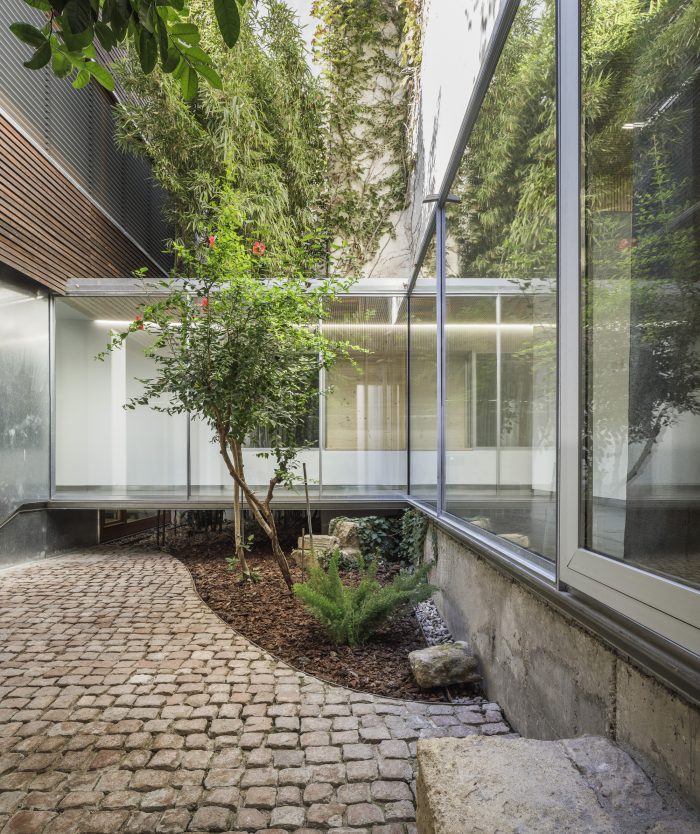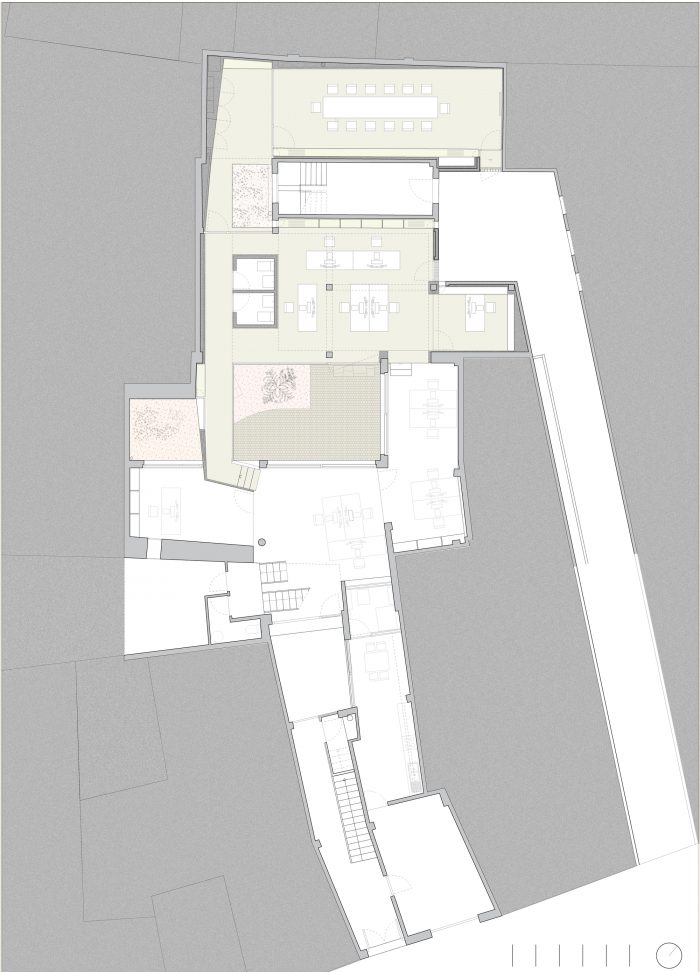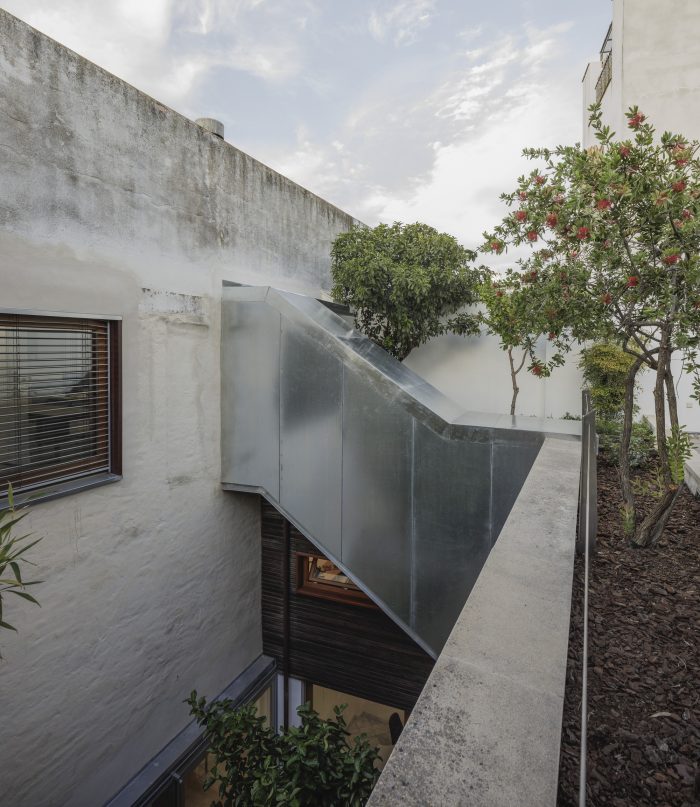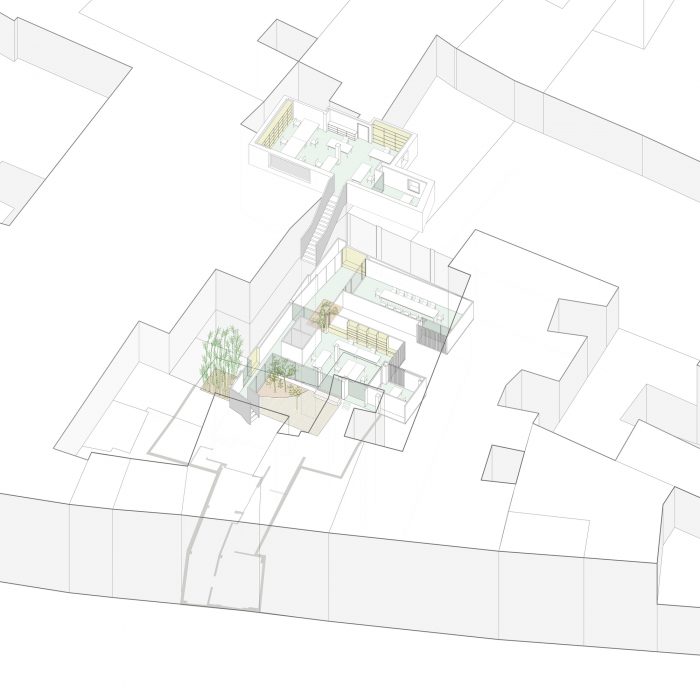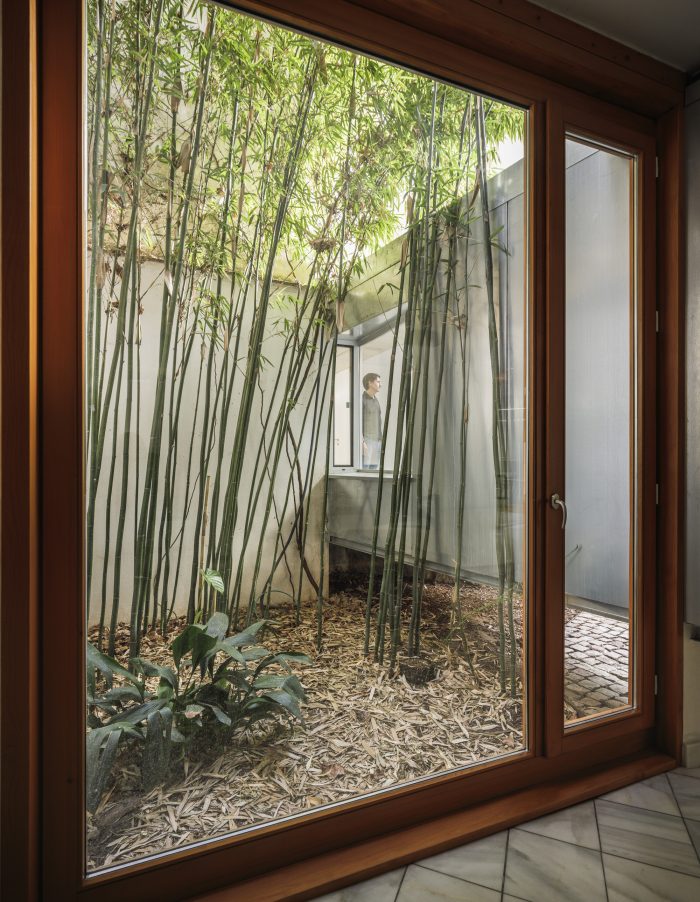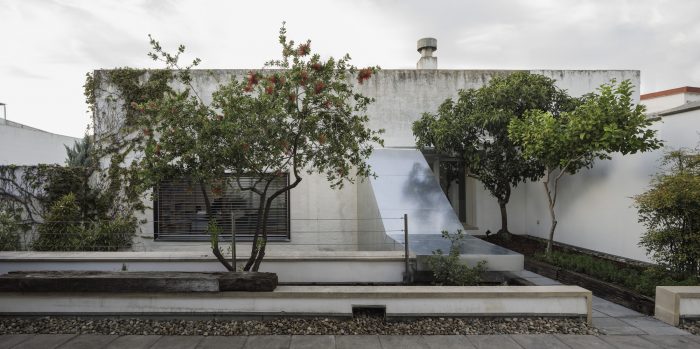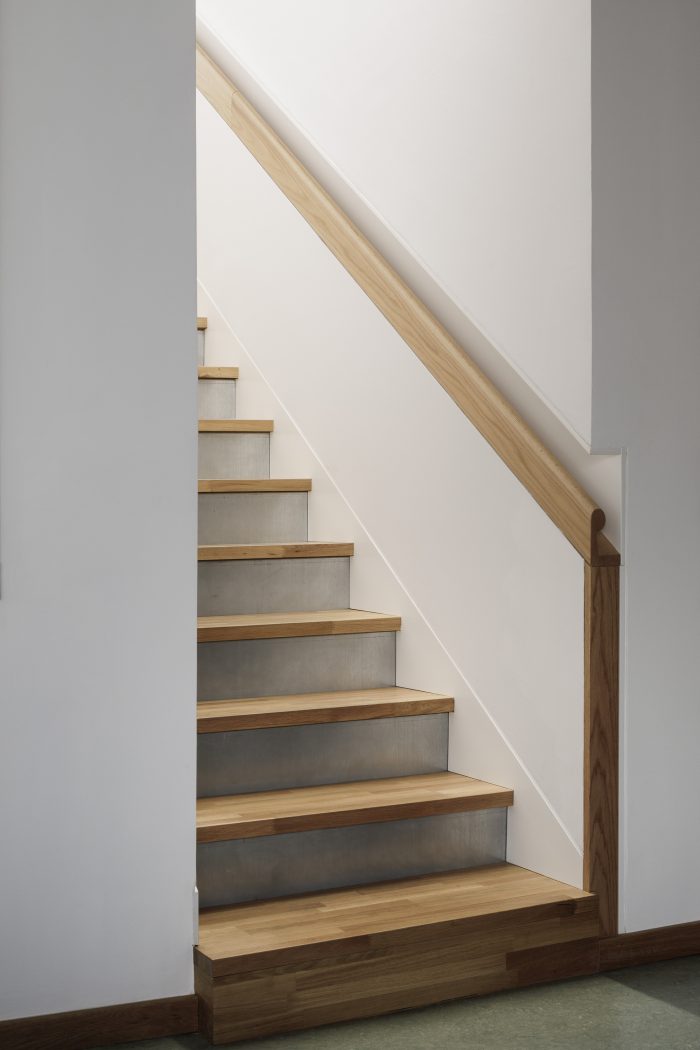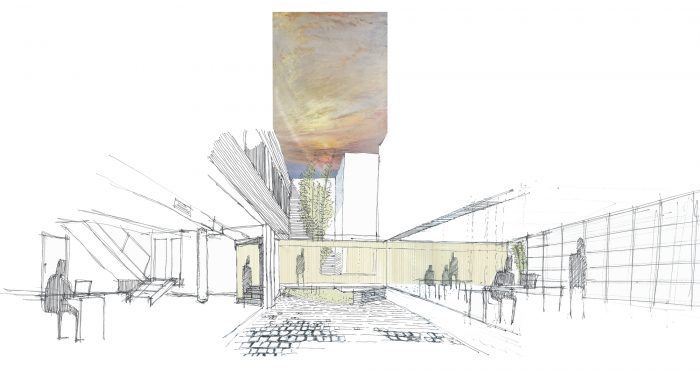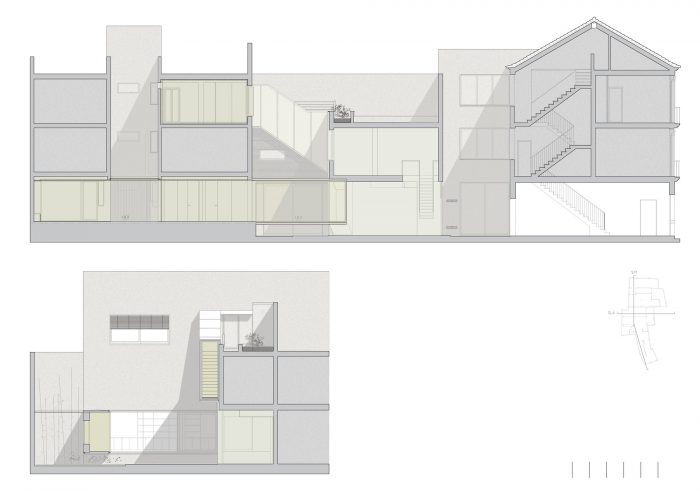科尔多瓦的城市中心是由密集的街区组成的,由无数的天井组成,这些天井赋予了这个地方从未被完全了解的空间特征。当我们走进去时,我们会发现不同时代的建筑混合在一起,质量和空虚交替,给内部带来了光线、空气和隐私。这种光与影的领地在整个中间空间的集合中得到了体现,它们滋养了地中海建筑遗产。小巷、开放的走廊、通道、走廊、庭院、画廊、日光浴室,最后还有屋顶的零碎景观,构成了一个空旷的空间网络,穿插在城市密度中,为街区内部的公共空间提供连续性。
The urban center of Córdoba is made up of dense blocks drilled by infinity of patios that give to this place the character of a space never fully known. When we go inside we find an amalgam of constructions from different eras where mass and emptiness alternate giving light, air and privacy to the inside. This territory of light and shadow is articulated throughout the collection of intermediate spaces that nourish the Mediterranean architectural heritage. Alleyways, open hallways, passages, corridors, courtyards, galleries, solariums and, finally, the fragmented landscape of the rooftops, make up a network of empty spaces that are interspersed in urban density providing continuity to the public space inside the block.
在这种情况下,我们必须对位于三栋住宅厂房内的办公室进行扩建,通过纳入三个新的物业,两个在底层,一个在顶层。我们认为,扩建应该在不影响一个区域和另一个区域的情况下进行,从而保证最终的工作空间的凝聚力。我们提出的干预措施试图在不提高纸笔的情况下画出一个连续的空间,从原来的办公室渗透到街区内部,穿过庭院,进入建筑密度,在需要的时候挖空,并窥视现有的庭院,直到到达屋顶。地板、天花板和包层外部在整个介入过程中被延长,以强调空间的这种连续状态。高架和加热的混凝土地板横跨室内和室外空间;屋顶由插入原有混凝土结构之间的木板条组成的吸音板解决,当它被框住时,获得了新的表现力;最后,新工作空间的体积在与庭院相遇时被涂上了镀锌钢板,并被放置成没有支撑的体积,强调其作为一个自主装置插入现有的空隙中的地位。这些家具、由吸音天花板和庭院提供的通风所界定的区域,划分了没有分区的工作空间,对开放的计划进行了细微的调整。
In this context, we have to project the expansion of an office located in a three-dwelling house plants by the incorporation of three new properties, two on the ground floor and one on the top floor. We believe the extension should happen without perceiving the transit between one area and another, thus guaranteeing the final cohesion of the resulting workspace. We propose the intervention trying to draw without raising the paper pencil, defining a continuous space that from the original offices penetrates through the inside the block, going through courtyards, entering the built density, hollowing out when it is demanded and peering into the existing courtyards until reaching the rooftop. Floor, ceiling and cladding exterior are prolonged throughout the intervention to underline this continuous condition of the space. A elevated and heating concrete floor crosses interior and exterior spaces; the roof is solved with an acoustic panel of wooden slats inserted between the original concrete structure that acquires a new expressiveness when framed by it; finally, the volume of the new workspace is coated with galvanized steel sheets when meets the courtyards and is placed as volumes without supports, underlining its status as an autonomous device inserted in the gaps existing. The pieces of furniture, the areas defined by the acoustic ceiling and the ventilation provided by the courtyards delimit workplaces without divisions, nuancing the open plan.
干预的目的是为了利用西班牙南部历史名城巨大的中心传统衔接的透明性、序列和梯度的概念,同时又不忽视缝合可供扩大的空间的意愿。空间以空气和光线的形式穿透质量,作为一个连续的物质,属于整个城市,并被驯化在块内。
The intervention seeks to profit the concepts of transparency, sequence and gradient typical of traditional articulations of the vast centers of the historic cities of the south of Spain, without lose sight of the willingness to sew the spaces available for enlargement. The space penetrates the mass in form of air and light as a continuous matter that belongs to the entire city and is domesticated inside the block.
建筑师:Sol89
面积:250平方米
年份:2019年
摄影:Fernando Alda
牵头建筑师:María González, Juanjo López de la Cruz
合作者:Elena González Gracia, Rosa Gallardo Parralo, Miguel Sibón
Rigger:Cristóbal Galocha (estudio), José Luis Luque (obra)
Mep:Alejandro Cabanas
橱柜制造者:Fritz Josef Koch
城市:科尔多瓦
国家:西班牙
Architects: Sol89
Area: 250 m²
Year: 2019
Photographs: Fernando Alda
Lead Architects:María González, Juanjo López de la Cruz
Collaborators:Elena González Gracia, Rosa Gallardo Parralo, Miguel Sibón
Rigger:Cristóbal Galocha (estudio), José Luis Luque (obra)
Mep:Alejandro Cabanas
Cabinetmaker:Fritz Josef Koch
City:Córdoba
Country:Spain




